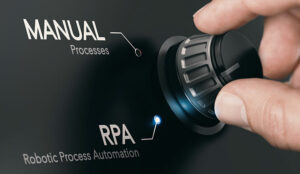Scott Merritt of Jacada discusses the best uses of Robotic Desktop Automation in the contact centre.
Robotic Desktop Automation (also referred to as Attended RPA in some circles) can be a major asset to contact centres, streamlining both back-office and customer-facing processes.
That’s great news for agents who are continually asked to take on more complex requests now that self-service tools address the bulk of customers’ simple questions and issues.
Robotic Desktop Automation is especially helpful in the current climate, where remote agents can no longer depend on the assistance of nearby employees to help them work through any problems they can’t answer.
Many companies have only begun to scratch the surface of RPA’s potential, though — that’s if they’ve even begun using this technology at all.
Here are some of the most effective ways to discover RPA applications so you can make the most of your investment.
There are plenty of avenues to go down when searching for contact centre processes and tasks that are the best candidates for automation candidates.
Where you should focus your attention, especially if you’re getting your first taste of RPA?
1. Knowledge Base and Job Aids
If you want to know how you can help agents automate their work, you first need to understand what they’re doing every day.
The documentation offered by knowledge base systems, job aids and additional materials provides a lot of insight into how contact centre employees carry out their day-to-day work, giving you plenty of food for thought.
2. Call Recordings and Speech Analytics
Look for high-volume, high-frequency transactions when identifying your initial RPA candidates.
Call recordings will show you how agents work through your most common call types and where those processes exist.
3. Observation and Agent Shadowing
Having an experienced and qualified individual observe agent interactions can take a lot of the guesswork out of automation discovery.
Someone with a deep understanding of RPA and its contact centre applications will be able to readily see automation opportunities when shadowing employees.
4. Process Discovery and Process Mining
Mapping out existing processes and understanding how they function is key to spotting the best landing spots for RPA.
Process mining can give you a roadmap to streamline and improve internal operations through automation.
5. Questionnaires and Ideation Sessions
Sometimes, the best approach is to go directly to the people who will feel the biggest impact of automation: your agents.
Ask them about the work that takes up a lot of time or is a pain to manage to find potential RPA candidates.
These approaches are just a few starting points to consider. Leave no stone unturned as you search for RPA opportunities.
Call Centre Tasks That Should be Automated Using RPA
It’s important to always begin with a particular outcome in mind when implementing RPA so you know that the automation is the right fit for the process.
From there, you can work backward to figure out how RPA can help deliver those outcomes and which tasks need to be automated to streamline and improve related workflows.
When considering a particular RPA candidate, break down every step in the process so you can fully understand what it entails and what the role human operators play along the way.
In general, any agent-facing process will comprise of the following steps that represent the repetitive tasks agents perform.
1. Get the Next Work Item
When agents pick up the next work item, be it a new phone call, email or chat interaction, they need to gather contextual information manually from multiple systems — a very good opportunity for using robotic desktop automation to save average handle time and improve the customer experience.
2. Update Customer Information
While most modern enterprise systems have APIs, the contact centre agent often plays the role of human middleware copy pasting information across multiple systems on the agent desktop — another great candidate for robotic desktop automation using attended RPA.
3. Wrap Up the Work Item
Contact centre agents routinely spend anywhere from 30 to 60 seconds documenting the interaction and dispositioning the nature of the interaction when they wrap up the interaction with the customer.
Call centres rely on the dispositioning to understand why customers contact the business and what actions were taken during the interaction to fulfil the customer’s request.
Agents have their shorthand for documenting these interactions, and the lack of consistency and accuracy in the documentation diminishes the business value and productivity of after call work.
Robotic desktop automation can be put to use here to track agent’s actions during the interaction, generate automated call summaries and update the underlying systems as well.
The ROI of Vertical RPA vs Horizontal RPA
You may find opportunities for vertical RPA — that is, end-to-end automation across the entire process.
However, you’re just as likely to realize that there are so many exceptions to a process, that you would be better off trying to automate one aspect of it rather than try to deal with the complexity of accounting for all of those variables.
Taking a more granular approach will pave the way for horizontal RPA, where you automate tasks that overlap different business units and stakeholder teams.
For instance, various departments within a financial services organization, including the call centre, deposit operations and wire transfer teams, may need to put a hold on a deposit for a number of reasons.
Automating that specific task could deliver more value because it affects more employees across the entire organization while requiring less work to implement.
Assess every RPA opportunity with this approach to accurately project the return on investment and prioritize automations that will give you the biggest bang for your buck.
Author: Guest Author
Published On: 3rd Mar 2021 - Last modified: 20th Oct 2023
Read more about - Guest Blogs, Jacada, Robotic Process Automation (RPA)















